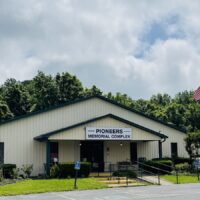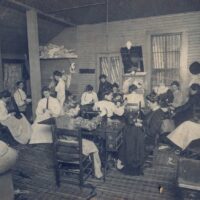Several weeks ago, I made a valiant effort at reclaiming part of our backyard at the old Dalton house on East Seventh Street.
Specifically, I wanted to get rid of a puzzling hump of concrete at the center of a poison ivy and privet jungle. After prying at the edges of the hump, a good-sized chunk came up, and I found myself gazing into a gaping hole. Further inspection found the hole to be roughly cylindrical, brick-lined, at least 10 feet deep, and holding water and trash at the bottom.
Brendan and I cycled through the possibilities of what it was we had unearthed. A well, an older cistern (we already have one), or perhaps an entrance to the sewer? Ultimately, Brendan struck on the truth. We had stumbled upon the Dalton house’s original cesspit.

Yes, “cesspit” is a technical term
It may come as a shock to learn that many homes and businesses in Hopkinsville had bathrooms, showers, and sinks before there was even a thought of building a sewer system to handle the waste. The Monroe Dalton house was one of these. In her memoir “Quality Hill,” Sarah Dalton Todd specifies the house was built with two bathrooms. Until recently, I naively took it for granted this proved the existence of a city-wide sewage system. It did not!
Cesspits and drywells, two kinds of receptacles for at-home sewage management, dotted the backyards of Hopkinsville’s residences and businesses in 1900. These were primitive septic tanks. Drywells were basic dirt pits, while cesspits or cesspools had some kind of lining. Often, however, the terms were used interchangeably. Both received the waste from indoor plumbing and were supposed to be cleaned out every couple of months.
But this regular maintenance seems to have rarely happened. One exasperated Hopkinsville physician, Dr. R.L. Woodard, said, “It has become almost a daily occurrence for someone to tell me that he has the ‘best dry well in town.’ He says, ‘I have been using it ten years and have not had one bit of trouble with it, in fact have not had to have it cleaned out.’”
Dr. Woodard viewed an epidemic not as a potential danger but rather an inevitability in Hopkinsville’s rapidly urbanizing cityscape, if the city did not invest in a sewer system. In a 1904 Athenaeum paper, Woodard stated baldly, “Sooner or later all cess pool towns must travel the same road. All will end in an epidemic and then the cess pools will give place to sewers. But the damage will have been done…”
At least the Dalton’s cesspool was brick-lined and situated downhill from their cistern. But it was still uphill from their East Ninth Street neighbor!
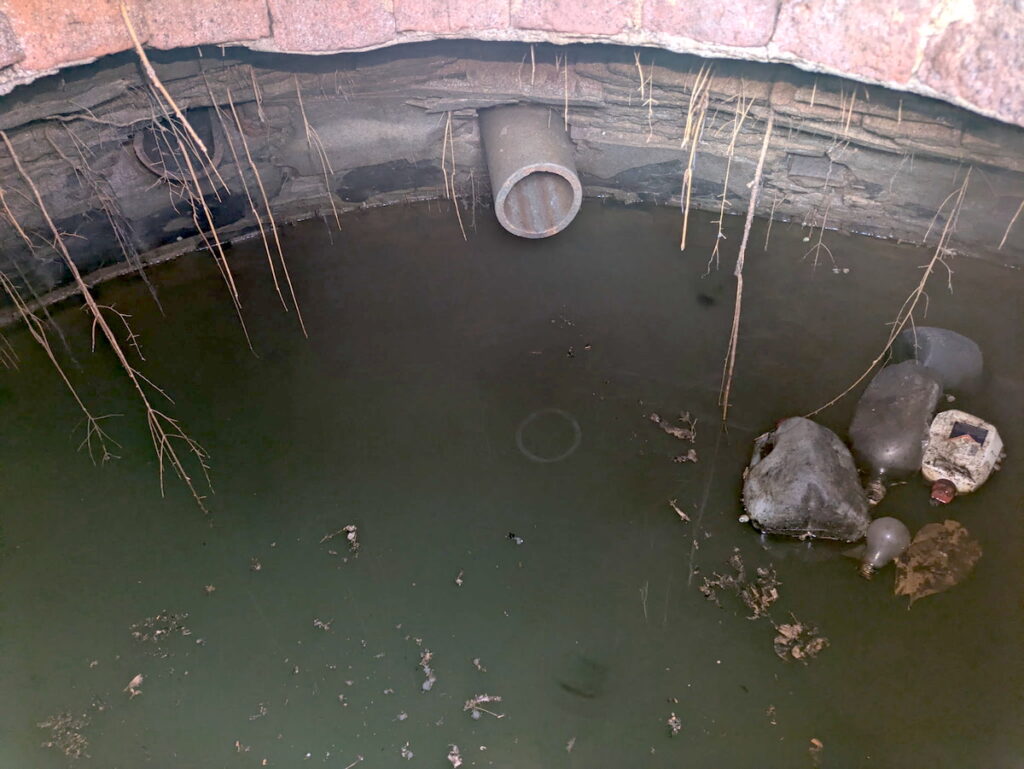
An unholy union
There was another waste removal option at the time. By the 1890s, Hopkinsville had a basic storm sewer, which drained into Little River. Individuals could petition the city’s board of council to tie their shops or homes into this sewer, and a number did. In 1893, the Hopkinsville Hotel Company requested and succeeded in hooking waste pipes from their new hotel at East Seventh and Virginia streets into the city sewer on Virginia Street.
The hotel in question was the Hotel Latham, and the ordinance allowed its owners “the privilege of conducting the waste-water, slops, human excrement, urine, etc., of said Hotel through said iron pipe and same to be discharged at its mouth.” The mouth being, of course, Little River.
In 1895, W.T. Cooper updated the Phoenix Hotel’s internal sewer system for $3,000. You can bet he also tied into the city sewer! And in 1902, a group of neighbors on South Main Street petitioned to be allowed to construct a sewer along their street, to empty waste from their homes. This would ultimately hook into the 13th Street sewer — and end up in Little River.
By 1904, individuals tapping their homes’ plumbing into the public sewer without getting an ordinance had become enough of a problem that the city instituted a $5 fine for each day the illegal hook-up was in use. (Adjusted to 2025 money, this is about $180 a day.) The topic of a sewer system was all over the newspaper.
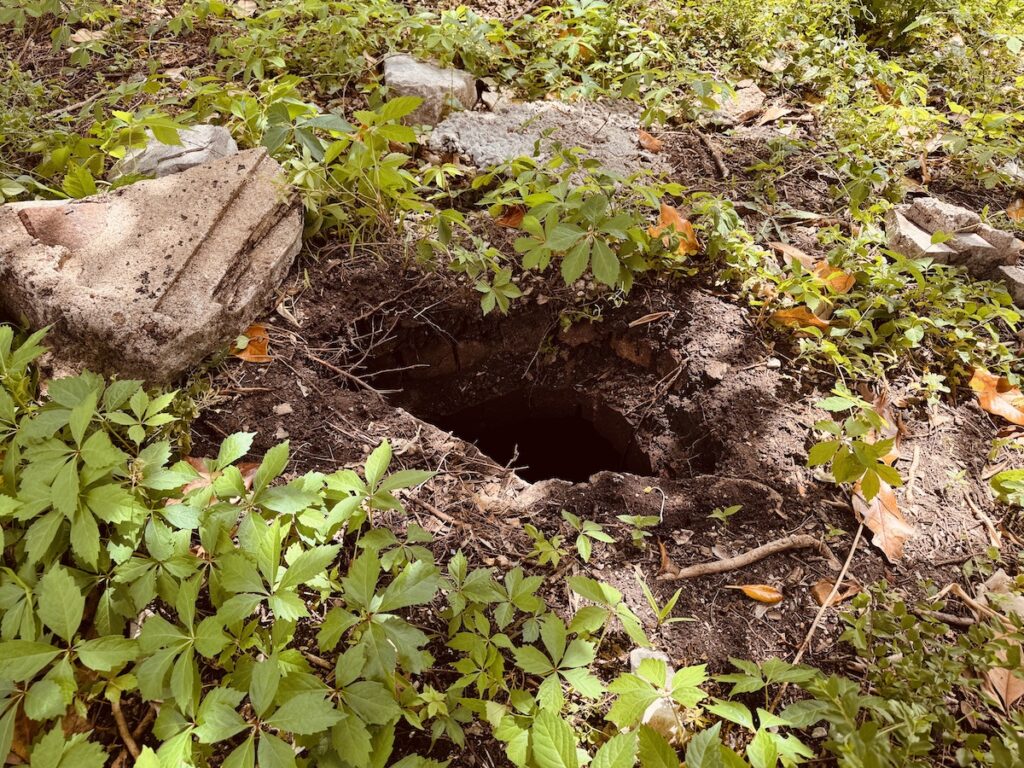
A plan is hatched
I hold it to be a truth that, in this period, when discussing Hopkinsville infrastructure you don’t have to look far to find a Dalton. By 1905, a familiar face made a cameo appearance with an idea to solve Hopkinsville’s sewage sorrows. Hilliard Dalton, architect of the Beltline Railway and the streetcar scheme, was the chosen representative from a syndicate of capitalists who proposed to build and maintain a sanitary sewer. He presented the idea to Hopkinsville City Council on April 8, 1905. They quickly adopted the proposal.
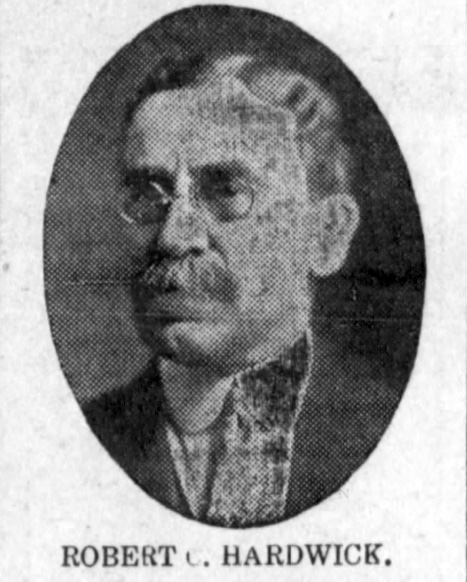
Hilliard Dalton, however, did not purchase the franchise. This was all happening at the same time as his Beltline Railway endeavor. Perhaps he felt like he had enough on his plate. Instead, Robert C. Hardwick jumped on the opportunity. Sometimes referred to as a doctor, Hardwick owned a drug store and dabbled in business ventures, eventually making his living in jewelry. He actually didn’t live in Hopkinsville at all, but in Owensboro.
Hardwick and four other men, James West, C.B. Petrie, C.S. Jackson, W.S. Harned, then formed the Hopkinsville Sewerage Company, which incorporated in June 1905 “to establish, construct, and maintain a systemn (sic) of sewers in the City of Hopkinsville and the vicinity, for the purpose of furnishing sewerage to said City and its inhabitants…” (Article III, Articles of Incorporation, Christian County Courthouse, Hopkinsville, KY)
These were big names in Hopkinsville. West was the president of Planters Bank, Petrie was a physician, and Jackson and Harned were both upper management at Planters Hardware Co. The plan was to lay about seven miles of pipe, all of which would drain into a large septic tank on the west side of Little River, at the foot of West Ninth Street.
By February 1906, the Hopkinsville Sewerage Company was advertising that its system was up and running and that homeowners who wished to connect to it could do so for no charge before April 1.
People jumped at the chance to tie into a modern sanitary sewer system … or did they?
Cesspit at 713 E. Seventh St.
Monroe Dalton built his house on East Seventh Street over the spring and summer of 1907. The family moved in that fall, a full year and a half after the sanitary sewer was operable. So why was the Daltons’ house built with a cesspit? The neighborhood is so close to downtown that I can’t imagine the house being out of range for a sewer hookup. We may not be able to answer this question fully, but I think asking it at all can help shine a light on the rest of Hopkinsville.

In 1907, the Board of Health, newly created and led by none other than Dr. R.L. Woodard, was still complaining about drywells. And in 1908, City Council was busy settling disputes between the Hopkinsville Sewerage and people who had their own private sewers and wanted to keep them separate. City Council created a Sewers Committee, which ultimately decided to terminate all agreements allowing private sewer lines to tie into the storm sewer. It handed over these private lines to the Hopkinsville Sewerage Co. Predictably, this garnered a public outcry.
In December 1908, Alfred Eckles, now secretary and treasurer of the Hopkinsville Sewerage, ran an alarmist (yet valid) advertisement in the Hopkinsville Kentuckian newspaper linking a recent typhoid fever outbreak in Georgetown, Kentucky, to poor sanitation. He reported that Hopkinsville still had between 250 and 300 dry wells.
He ended with an indictment that simultaneously tried to shame Hopkinsvillians into better sanitation and laid bare the truth of the whole matter: “Will you take the life of your loved ones in hand for so small a sum?”
It appears the main reason people in Hopkinsville didn’t want to use the sanitary sewer was very simple. They had to pay for the service. What seems like a no-brainer to our modern minds took a little bit of getting used to for people accustomed to the old — free — system.
I should mention that Hopkinsville was by no means late to the game in building a sanitary sewer system. In fact, it beat Bowling Green and Franklin to the punch by several years.
Cleaner days ahead
When it came to hooking into the sewage system, progress eventually won out. But this didn’t happen as rapidly as you might think. In 1935, the Kentucky New Era reported several cases of paralysis in the city, noting that they had occurred in areas where there were no sewer system hookups and people relied solely on drywells. Polio, a viral illness that can cause paralysis, spreads in people through oral fecal contamination.
And as late as 1954, the newspaper ran ads for Robert Mumford, the City Sanitary Man, to dig new dry wells and clean out old ones. Nationwide, the construction of new cesspits was not banned until 2000.
Studying history regularly reminds me that progress isn’t inevitable. It takes effort and flexibility. And often, as Dr. R.L. Woodard no doubt learned, it takes the dedicated persistence of saying something you know to be true but no one else seems to care about, over and over and over again.

Grace Abernethy is a historic preservationist and artist who specializes in caring for and recreating historic architectural finishes. She earned her Master of Science in Historic Preservation from Clemson University in 2011 and has worked on historic buildings throughout the eastern United States. Abernethy was a recipient of the South Carolina Palmetto Trust for Historic Preservation Award in 2014 and won 2nd place in the Charles E. Peterson Prize for the Historic American Buildings Survey in 2011. She and her husband, Brendan, moved to Hopkinsville from Nashville in 2020. She works as an independent contractor and is a board member of the Hopkinsville History Foundation.

